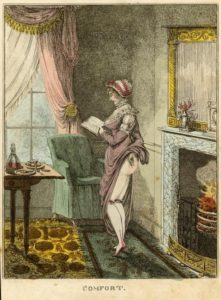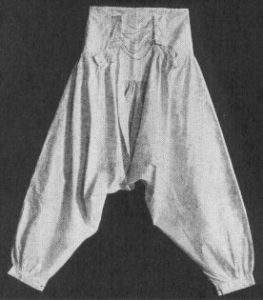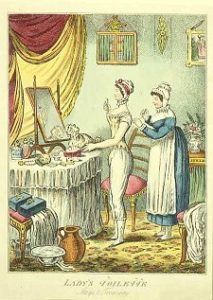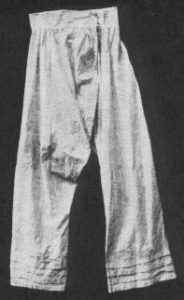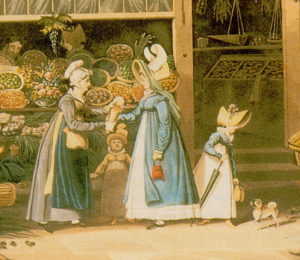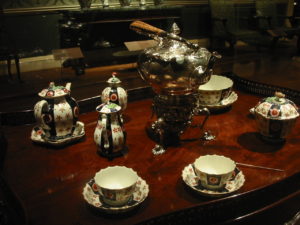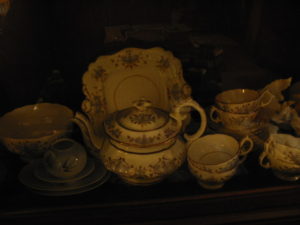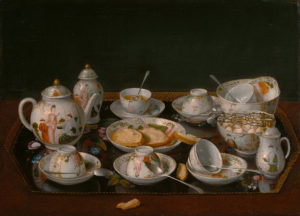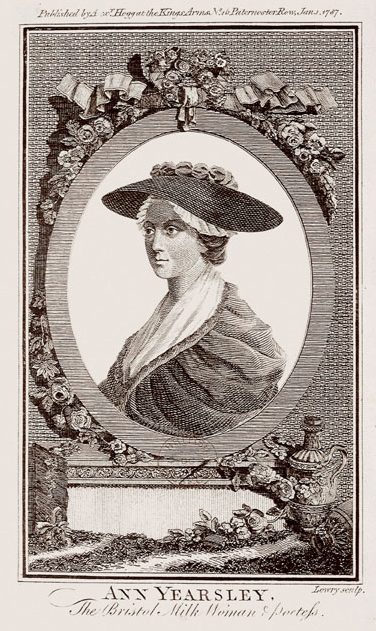One of the questions that seems to come up a lot when I ask what people want me to blog about is underpants. Did they? Didn’t they? Didn’t they feel naked without them? When I asked on FaceBook what topics I should think about covering in the next few months, this one again floated to the top, so here we go …
The earliest depictions I’ve seen of drawers on women are 14thC German allegorical images on the topic of the woman “wearing the pants” in the family. In all of them, a man is usually also reaching for them, clearly desperate to reclaim the “power” they represent or is being beaten with a distaff or stool (or both). Clearly these images cannot be taken as documentation for women wearing underpants. In Textiler Hausrat, by Dr. Jutta Zander-Seidel, she states: “Underpants were not a usual component of women’s clothing in the 16th and 17th century [the eras of study in her book]. . . for the general populace, the use of these garments are not known before the beginning of the 19th century.”
The earliest drawers that I can document for women are from the 16thC and are Italian. They are documented in Janet Arnold’s Patterns of Fashion 4. They are voluminous, split-crotch drawers with embroidery all over them. Clearly not mere “underwear” and not a fashion that I’ve seen outside of Italy. It should be noted that these are commonly depicted as the fashion of Venetian courtesans, who wore open gowns that displayed them.
So when DID women start wearing drawers of some kind? As Dr. Jutta Zander-Seidel states, the early 19thC. Knee-length drawers of peach coloured stockinette are reported to have been worn as early as 1806, but they were considered fast and unladylike, and from everything I’ve see and read, were not commonly adopted until later. They had a split crotch, usually being made up of two entirely separate legs on a drawstring waistband. An illustration from 1810 shows a lady wearing them, so it can be construed that they were becoming more accepted by then, but given the numerous examples of women NOT wearing them, they were clearly not universal. I see more frequent examples from the 1820s onward though.
Another thing that crops up in the 1820s is pantalettes. Unlike drawers, these were meant to show just below the hem of the skirt. You see them first in the teens (there’s a report of Princess Charlotte scandalizing people by wearing them). Again, their adoption does not seem to be anywhere near universal, and they were gone by the 40s, relegated to children’s wardrobes. Like drawers, they were made up of two separate legs. I see very little representation of these in art, but if you look REALLY closely you will occasaionly spot them peeking out from under a skirt here and there.
A note of warning for Regency authors: Beware of Bloomers. This garment was named after the famous suffragette Amelia Bloomer, and she is Victorian. So don’t use the term “bloomers” when you mean drawers or pantalettes.
Ok, now on to the good stuff: wearing them.
In my personal experience, they’re completely unnecessary. You’re wearing at least three layers of skirt (chemise, petticoat, gown) and all the fabric does a pretty good job of keeping you covered and discreet. All drawers really are is a major challenge when you need to pee? TMI? Sure. Here’s some more: when you can’t bend at the waist and you can’t pull them on and off, having to pee through a slit you need to hold apart while also holding up your skirt is a royal PITA (suddenly those sawhorse-looking stands for a lady’s chamber pot make a lot of sense!). Also, can we talk about chaffing? A bunch of loose fabric between your thighs combined with a little perspiration equals major chaffing. So yeah, in period garb I’m a fan of going commando and I won’t be putting my heroines into drawers.

